Royal Route in Warsaw
Warsaw’s Royal Tract – Krakowskie Przedmieście
The Royal Route in Warsaw begins at the Royal Castle (Castle Square) were the Old Town ends. It leads directly to the Castle in Wilanow, which is about 10 km in southern direction. In former times you could continue southwards and end your trip in Cracow. For tourists the most interesting part of the route is between the Castle Square and Rondo de Gaulle. This route, that easily can been done walking in around 30 minutes, includes the two streets Krakowskie Przedmieście and Nowy Świat, which merge at Staszic Palace. One can print a copy of this page to have a guide that leads through the most prestigious street of Warsaw.
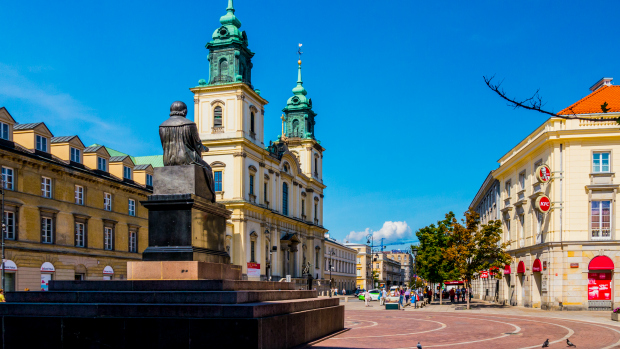
Walking from the Royal Castle in southern direction on Krakowskie Przedmieście, the following sights can be seen:
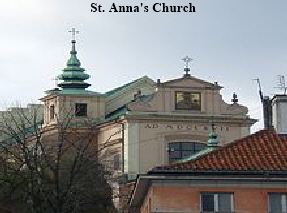 St. Anna’s Church (Krakowskie Przedmieście 68)
St. Anna’s Church (Krakowskie Przedmieście 68)
Dates back to a gift from 1454. The church was remodeled several times. Today’s look reflects a reconstruction in 1788.
Prażmowski House (87)
First built around 1660, later rebuilt in Rococo style. After the war reconstruction in its 1660s style.
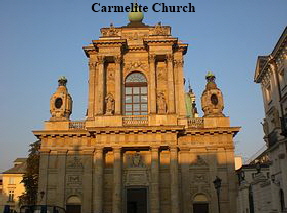 Adam Mickiewicz Monument
Adam Mickiewicz Monument
This monument to honor the most famous polish romantic poet of all times. It was presented to the public on his 100th birthday in 1898.
Carmelite Church (Church of the Assumption of Virgin Mary and St. Joseph, 52/54)
Built towards the end of the 17th century for the Carmelite monks. The facade as it can be seen today was changed around 100 years later.
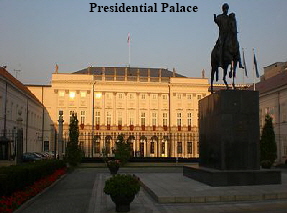 Presidential Palace (Namiestnikowski Palace, 46)
Presidential Palace (Namiestnikowski Palace, 46)
The Presidential Palace was already constructed towards the middle of the 17th century and housed the Koniecpolski family, so the palace used to called the Koniecpolski Palace.
Later the Radziwill’s lived here, so one might still hear people talking about the Radziwill Palace. Its name Namiestnikowski Palace dates back to the Russian occupation.
In 1955 the Warsaw Pact was signed here. Since 1994 it is the official residence of the Polish President.
Józef Poniatowski Monument
The Statue of Prince Józef Poniatowski, who died in a fight near Leipzig 1813 was made by Danish sculptor Thorvaldsen.
As the monument was destroyed during the war, Copenhagen gave a new statue to Warsaw, which now stands in front of the Presidential Palace.
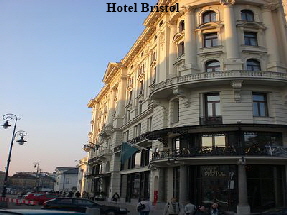 Hotel Bristol (42/44)
Hotel Bristol (42/44)
This hotel was built around 1900 and soon became the place where the most influential people stayed and dined.
The hotel has since then been renovated, but you can still feel the atmosphere of the older days inside, including the hotel rooms.
St. Joseph’s Church (34)
It is worth the while to go inside of the church as you will see nice pieces of art in Rococo style and some beautiful paintings.
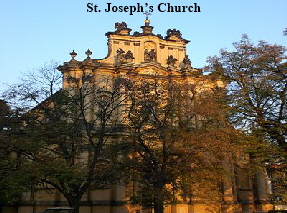 In front of the church is a Monument of Cardinal Stefan Wyszyński to honor his work for the Polish Catholic Church.
In front of the church is a Monument of Cardinal Stefan Wyszyński to honor his work for the Polish Catholic Church.
Tyszkiewicz Palace (32)
Built before 1793. From the 1840’s the Potocki family lived here, so that some people call it the Potocki Palace. Nowadays it has become a part of the Warsaw University.
Uruski Palace (30): This palace was constructed around 1845. It is also part of the University today.
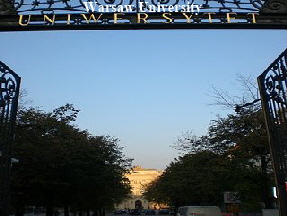 University of Warsaw (26/28)
University of Warsaw (26/28)
The area which hosts the Warsaw University includes a large number of buildings, which have been constructed in different epochs.
The history of the Kazimierzowski Palace for example dates back to the early 17th century, now you can find the Rector’s Office there.
Also worth seeing is the Old University Library, which you will run into if you pass the main gate and continue straight on. Of course you do not need to be student to walk around on the campus.
The University of Warsaw was founded in 1816 and one can imagine that there is not enough space for all students here, so that several faculties have been moved to other parts of Warsaw. Also worth mentioning is that is the largest university in Poland.
Czapski Palace (5)
Built at the beginning of the 18th century, but remodeled from time to time. The building that is just across the university is famous because of the people that have lived here, this includes Chopin and the Krasiński family.
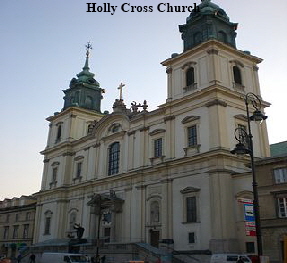 Holy Cross Church (3)
Holy Cross Church (3)
The Holy Cross Church (Missionary Church) was built from 1696 and is one of the must see places. Inside the church you can see a pillar that contains the heart of Frederic Chopin. It was Chopin’s last wish to have his heart brought back to his home country Poland.
Between the Holy Cross Church and Staszic Palace the name of the street changes from Krakowskie Przedmieście to Nowy Świat.
Staszic Palace (Nowy Świat 72)
Built in classical style at start of the 19th century 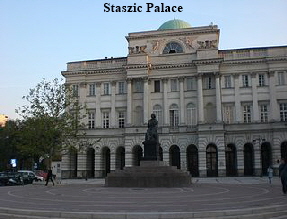 with financial aid from Stanislaw Staszic. In front of the palace you will be able to see the Nicholas Copernicus Monument which was presented to the public 1830.
with financial aid from Stanislaw Staszic. In front of the palace you will be able to see the Nicholas Copernicus Monument which was presented to the public 1830.
Kossakowski Palace (19)
Today’s look dates back to a remodeling of the palace done towards the middle of the 19th century. Later Kossakowski bought the palace which gave the building the name it still has today.
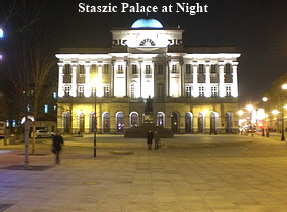 The rest of buildings along Nowy Świat were mostly constructed in the 19th and 20th century. At the end of the 19th century the first places to eat and shop emerged. Nowy Świat is still the favorite place for taking a walk and doing some (rather expensive) shopping, especially when counting in the two streets Foksal (which has nice buildings like the Zamoyski and the Przezdziecki Palace) and Chmielna (one of the few pedestrian zones).
The rest of buildings along Nowy Świat were mostly constructed in the 19th and 20th century. At the end of the 19th century the first places to eat and shop emerged. Nowy Świat is still the favorite place for taking a walk and doing some (rather expensive) shopping, especially when counting in the two streets Foksal (which has nice buildings like the Zamoyski and the Przezdziecki Palace) and Chmielna (one of the few pedestrian zones).
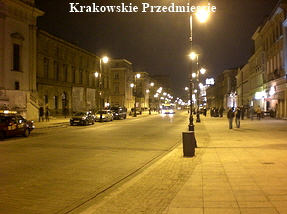 There are lots of restaurants, cafes, bars and discos close to where these 3 streets cross (which is just 200m from Rondo de Gaulle).
There are lots of restaurants, cafes, bars and discos close to where these 3 streets cross (which is just 200m from Rondo de Gaulle).
Continuing further to the south you will pass:
Rondo de Gaulle with Poland’s only palm, Three Crosses Square with St. Alexander’s Church, Ujazdowski Park, Łazienki Park and finally Wilanow Palace.
Directions
From Old Town, Castle Square (north)
Bus 125, 170, 190, 307, 512 or Tram 13, 23, 26, 32
From Rondo de Gaulle (south)
Bus 111, 117, 158, 303, 507, 517, 521 or Tram 7, 8, 9, 22, 24 25, 43
From Metro Centrum (southwest) walk along Chmielna Street to Nowy Świat





